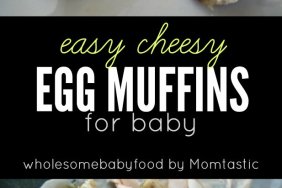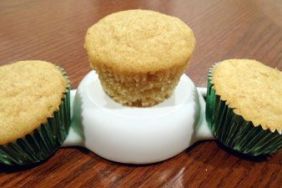Wheat and Egg substitutes may be an important part of an infants diet due to allergies or baby’s age. There are babies may not be able to eat eggs or wheat in baked goods due to either their age or an allergy.
This page contains a compilation of egg and wheat substitutions for those infants who might have an egg allergy or a wheat (not a gluten intolerance) allergy.
What are good substitutes for eggs in baby’s foods?
Pioneer Thinking
- Ener-G Egg Replacer – follow directions on box.
- 2 tbsp corn starch = 1 egg
- 2 tbsp arrowroot flour = 1 egg
- 2 tbsp potato starch = 1 egg
- 1 heaping tbsp soy powder + 2 tbsp water = 1 egg
- 1 tbsp soy milk powder + 1 tbsp cornstarch + 2 tbsp water = 1 egg
- 1 banana = 1 egg in cakes (using a banana may alter the taste of the baked good.)
- ONE (1) egg equals any one of the following, simply mix together from Bread Beckers 2 Tbs. flour
- ½ tsp. oil
- ½ tsp. baking powder
- 2 Tbs. liquid
- 2 Tbs. water
- 1 Tbs. oil
- ½ tsp. baking powder
- 1 Tbs. flaxseed* (ground in coffee mill)
- 3 Tbs. warm water
- 1 Tbs. gelatin or fruit pectin
- 3 Tbs. warm water
- Yogurt, mashed banana, applesauce, pumpkin, or other pureed fruit or vegetables are good replacements for eggs in muffins or cakes.
- To replace eggs in casseroles, burgers, or loaves try mashed vegetables, tahini, (sesame seed butter) nut butters or rolled oats.
What can be used as a substitute for wheat flours for baby’s foods?
Please note that the following flours are wheat based:
- cake flour
- durum flour
- plain flour
- self-raising flour
- all-purpose flour
- wholemeal flour
- “gravy” flour (like Wondra in the U.S.)
- graham flour
Using non-wheat flours
If anyone in your family has a wheat allergy or a gluten intolerance, then you may already be cooking with non- wheat flours. Cooking with non-wheat flours is very tricky due to the lack of gluten in substitute flours. Gluten is what helps baked goods rise and gives them the lighter texture. Rice flour for example may yeild a more dry and crumbly baked good. You may need to add more liquid or egg yolks to make a more firm and “doughy” dough. Adding baking soda will also help. Note that baking soda may contain gluten so be sure to purchase a gluten-free baking soda. Mixing together different types of non-wheat flours will also give you a better texture and rise. Try using soy and rice or soy and potato flour to create 1 flour.
Wheat Flour Substitutes
The vast majority of baked good recipes call for all-purpose or wheat flour or wheat pastry flour. You may use an alternative flour. Whole wheat flour, specifically the gluten, makes baked goods more dense and helps some baked goods like breads rise. When you use an alternative flour, you will find the texture of baked good different if you are used to baking with all-purpose white flour or whole wheat flour.
- Barley flour This has a mild flavor and works especially well in pancakes, cookies, and quick breads. Replace up to half of any wheat flour in a recipe with this. May contain some gluten.
- Buckwheat flour (Buckwheat is NOT wheat) YUMMY in pancakes. It tends to make baked goods heavier and stronger tasting. Replace up to half of the wheat flour in any recipe with this.
- Oat flour Great for quick breads and cookies. It makes baked goods moister, chewier, and more crumbly. May contain some gluten due to cross-contamination.
- Brown rice flour Brown rice flour is specially good for those with wheat allergies; replace up to 1/4 of any wheat flour with this. Baked goods made with rice flour tend to be crumbly, so consider substituting a mixture of one part arrowroot or other thickener plus four parts rice flour. Adding more eggs is another way to reduce crumbliness. Since rice flour absorbs more moisture, you may need to add more liquid to recipe.
- Soy flour This is high in protein, but has a very strong flavor. Replace up to 1/4 of any wheat flour with this, then increase the liquid in the recipe and reduce the oven temperature by 25 degrees. http://www.foodsubs.com/Flour.html#all-purpose
To help you bake gluten-free, the Land O’Lakes Test Kitchens developed a Gluten-Free Flour Blend. It’s easy to make and store, and has been used in many of these recipes with consistent and delicious results. It’s made with alternative flours that are easy to find in your supermarket:
Rice Flour – this alternative flour has neutral flavor and provides a light, somewhat sandy texture that is reduced when mixed with other substitute flours in baking.
Potato Starch – this is a fine, light powder that lightens baked goods and is also mixed with other alternative flours to achieve a satisfactory texture. Potato starch tends to clump, so always mix well for best results.
Tapioca Flour– this ingredient is also known as tapioca starch or manioc. This ingredient gives baked goods their desirable chewy texture and lightens them up. It also helps to give a lightly browned appearance to a crispy crust.
When you want to bake without gluten, use this mix for a variety of baking recipes such as cookies, cakes and quick breads.
Preparation time: 5 min Yield: 3 cups
- 2 cups rice flour
- 2/3 cup potato starch
- 1/3 cup tapioca flour
- 1 teaspoon xanthan gum
Combine all ingredients in large bowl; stir.
Use mixture in baking recipes. Store mixture in container with tight-fitting lid.



